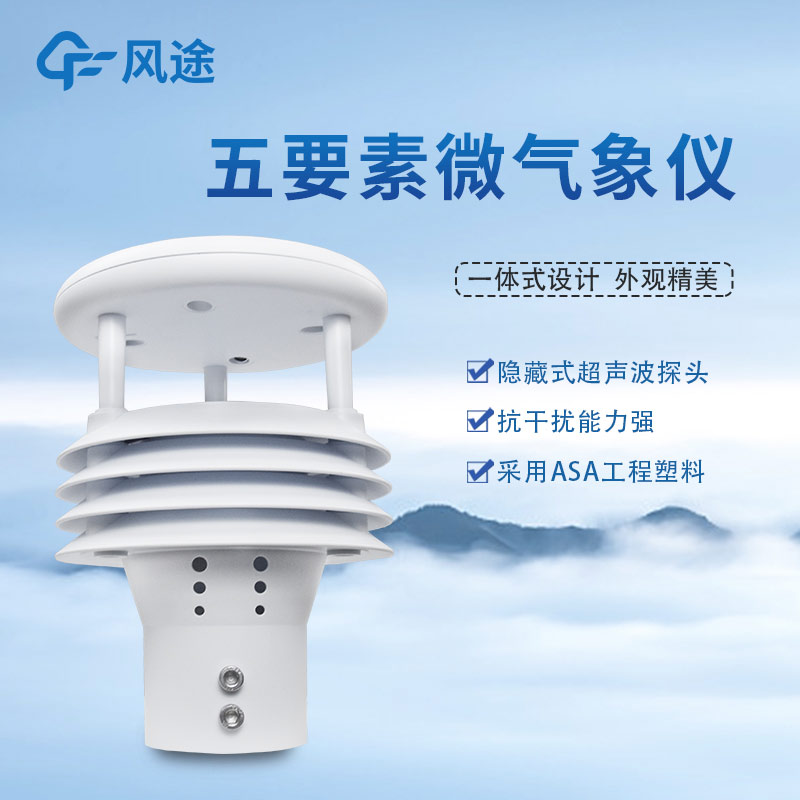Tianyi Sensor IOT Technology Co., Ltd
Sales Manager:Ms. Emily Wang
Cel,Whatsapp,Wechat:+86 15898932201
Email:info@fengtutec.com
Add:No. 155 Optoelectronic Industry Accelerator, Gaoxin District, Weifang, Shandong, China

Sales Manager:Ms. Emily Wang
Cel,Whatsapp,Wechat:+86 15898932201
Email:info@fengtutec.com
Add:No. 155 Optoelectronic Industry Accelerator, Gaoxin District, Weifang, Shandong, China
time:2025-05-16 08:54:27 source:Weather Station viewed:148 time
A miniature sensor is a highly integrated meteorological monitoring device. By integrating multiple miniaturized sensors and processing units, it can realize real-time monitoring and data collection of multiple meteorological elements. The device typically integrates core components such as temperature and humidity sensors, barometric pressure sensors, wind speed and direction sensors, etc., and can measure meteorological parameters such as ambient temperature, relative humidity, atmospheric pressure, wind speed, and wind direction. Some advanced models also have extended monitoring functions such as rainfall and light intensity. Its working principle is to use each sensor to convert physical meteorological parameters into electrical signals. After circuit processing, the data is sent to the terminal for analysis and storage through wireless or wired transmission methods.
Ordinary sensors have single functions and can only measure a single meteorological element. If it is necessary to obtain multiple meteorological data, multiple different types of sensors need to be deployed; while miniature sensors achieve multi-parameter integrated measurement, and one device can replace multiple ordinary sensors.
Portability and ease of installation are also important differences between the two. Ordinary sensors are large in size and heavy in weight, requiring professional equipment and venues for installation; miniature sensors can be flexibly installed in various scenarios, and can be quickly deployed and used in urban buildings, field monitoring points, or mobile monitoring platforms. Ordinary sensors lack data processing and transmission functions and require external complex data acquisition systems; miniature sensors have built-in data processing modules and communication modules, which can directly transmit data to the cloud or local servers, realize real-time data sharing and remote monitoring, and provide more efficient technical support for meteorological monitoring and early warning.

How to solve the problems of water pollution and water quality deterioration? Traditional manual sampling is time-consuming and lagging, but now there is a more efficient solution - the Water Quality Monitoring Buoy!As a key piece of equipment for water environment monitoring, its development precis...
Against the backdrop of rapid industrialization, industrial parks—core hubs for industrial agglomeration—face prominent pollution discharge issues. These issues are characterized by complex compositions, diverse types, and high emission intensity. Among them, industrial clusters and parks involvin...
The buoy-type online water quality monitoring system is a modern water body monitoring method. As an automated device for long-term and real-time monitoring of water quality, it is widely used in environmental monitoring of various water areas such as rivers, lakes, oceans, reservoirs, and aquacultu...
Negative oxygen ion monitoring stations function to real-time capture and transmit negative oxygen ion data in the air. Through "on-site display + remote viewing," they convert the originally invisible and intangible negative oxygen ion concentration into intuitive data, allowing managers...